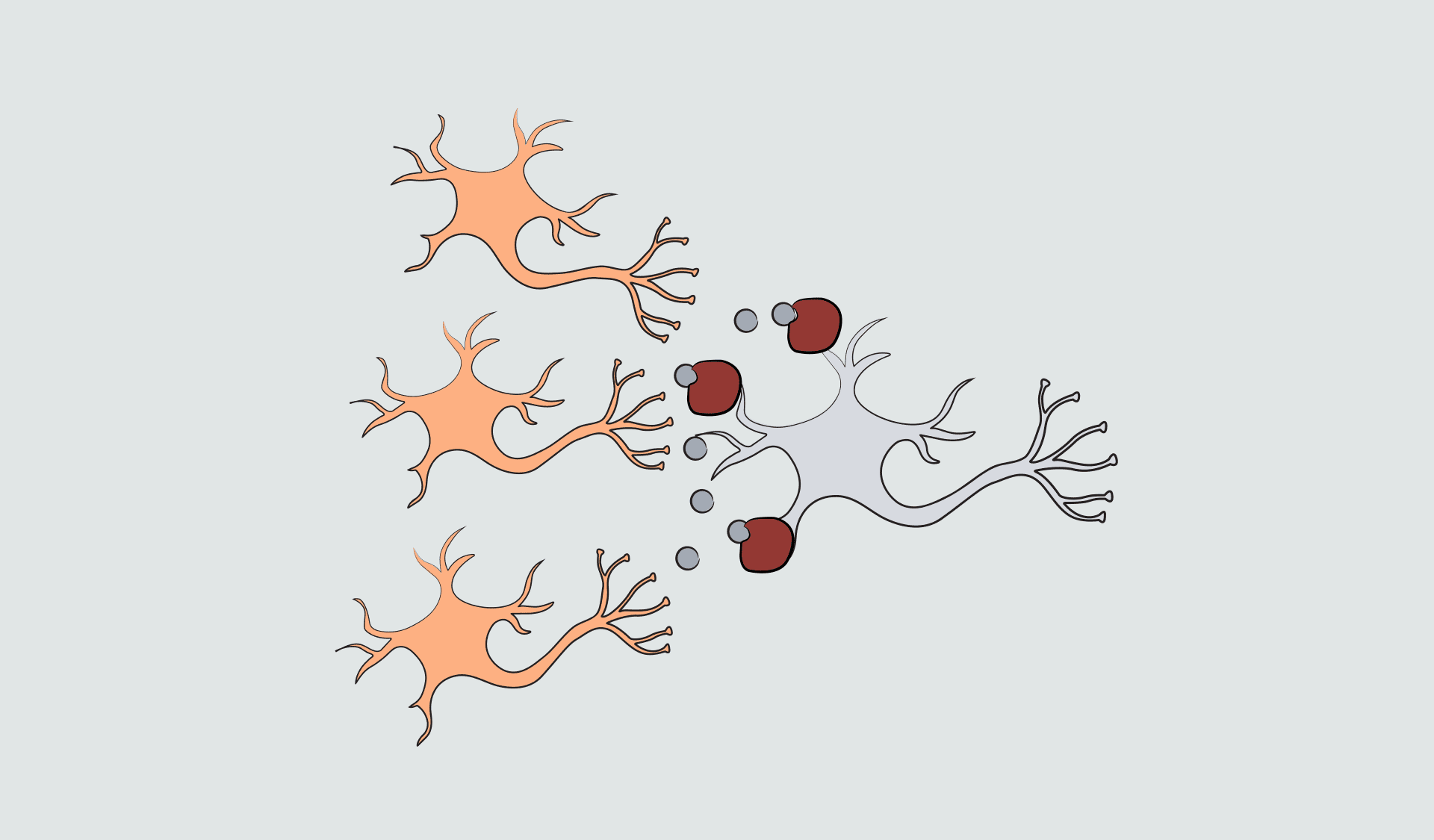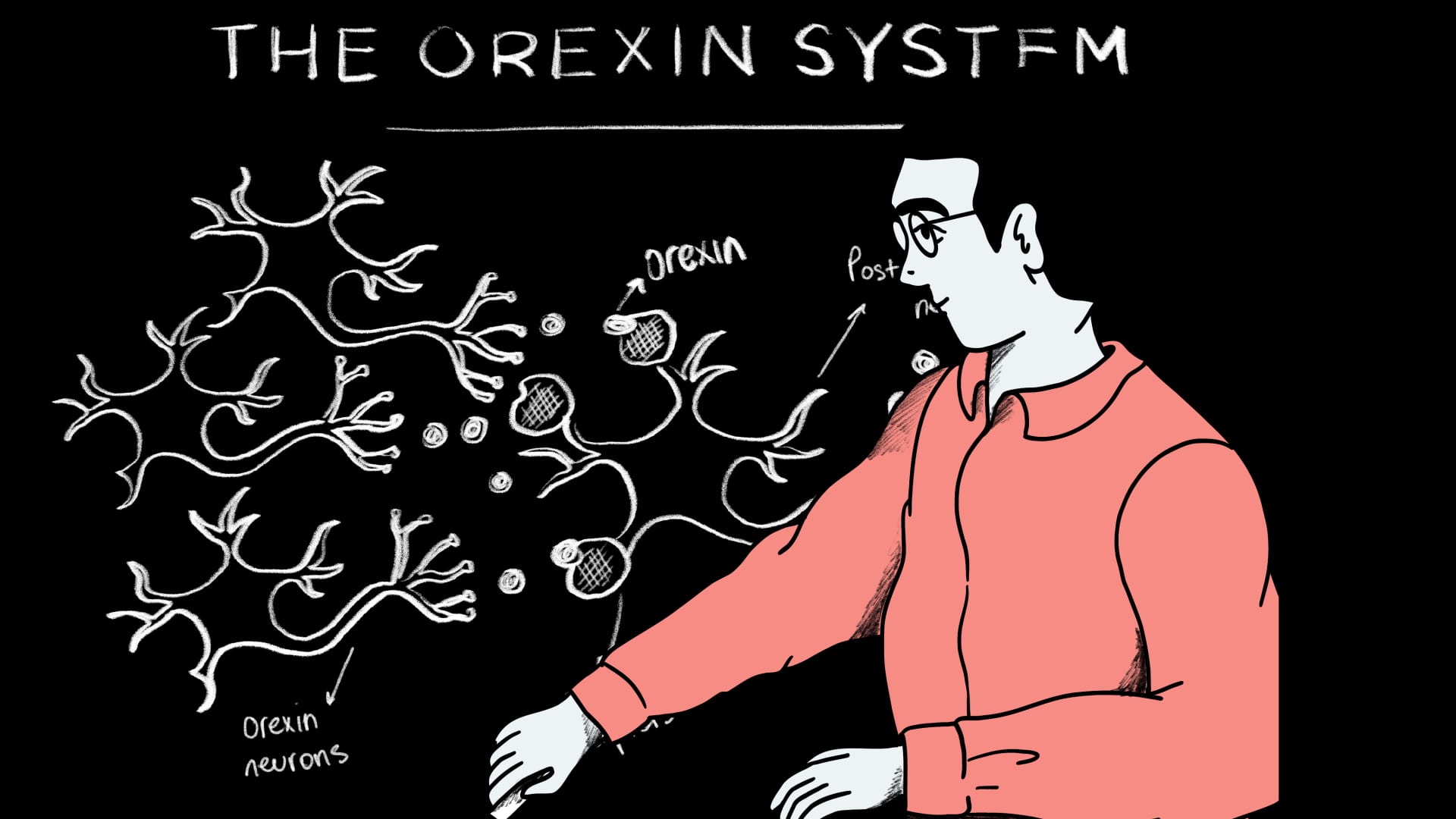Investigating the orexin pathway in narcolepsy type 1 | Takeda Stories

The challenge of investigating the orexin pathway in narcolepsy type 1
This story is intended for general public information and does not provide medical advice or guidance. Please consult your healthcare provider with any questions regarding your health. Takeda does not have any products approved by any regulatory agencies for use in narcolepsy type 1.
In 2011, Takeda scientists in Shonan, Japan embarked on an ongoing journey to design and study molecules that could potentially help people with narcolepsy type 1 (NT1), a rare neurological disorder characterized in part by excessive daytime sleepiness.
Our scientists were building on the seminal discoveries made by academic researchers like Professors Emmanuel Mignot, Masashi Yanagisawa and Jerome Siegel1-5. As we previously described using a “lock-and-key” analogy, this foundational research centered on the chemical messenger in the brain called orexin (also known as hypocretin) and its receptor that make up the biological pathway implicated in NT1.
These discoveries laid the groundwork for further scientific investigation and inspired scientists at Takeda to conduct their own research that was aligned with this “lock-and-key” concept associated with NT1. This work focused on identifying molecules of the appropriate size and shape that could be candidates for further research, with the potential to: 1) penetrate the brain and 2) interact with biological targets in the brain associated with the disease pathway.
This effort was almost like searching for a needle in a haystack. Leveraging Takeda’s extensive collection of more than one million synthetic (man-made) chemical compounds, our scientists utilized high-throughput screening (an automated method used in research to simultaneously characterize a large number of compounds) to determine which compounds had the desired structural and biological properties.

Tatsuki Koike, Ph.D., senior director, Global Chemistry
The molecules that were predicted to have the research criteria described above went through a process referred to as “lead optimization.” In preclinical research this process often involves performing multiple chemical reactions to refine the structural and biological characteristics of each molecule and evaluate its interaction with a biological target. For the small molecules that Takeda scientists were testing, the optimization process required up to twenty different chemical reactions. This required immense dedication and exceptional chemistry expertise to identify and refine these potential investigational molecules.

Haruhide Kimura, Ph.D., executive director, head of The Orexin Drug Discovery Laboratory, Neuroscience Drug Discovery Unit
Beyond refining the chemical structure, our scientists also studied the biological properties of these molecules, meticulously characterizing them using cell culture assays and animal models of narcolepsy. These rigorous evaluations contributed to Takeda’s ongoing research efforts aimed at deepening the understanding of rare sleep-wake disorders linked to orexin biology and exploring new scientific approaches to support individuals living with these challenging conditions.
Haruhide Kimura, Ph.D., executive director, head of The Orexin Drug Discovery Laboratory, Neuroscience Drug Discovery Unit, remarks: “Exploring new, previously untested approaches to address underserved neurological diseases like NT1 has been both challenging and meaningful. This work has inspired our researchers in Shonan to continue investigating orexin biology. With many lessons learned from years of scientific research, Takeda remains committed to supporting individuals living with rare sleep-wake disorders like NT1.”
References
- Lin L, et al. “The sleep disorder canine narcolepsy is caused by a mutation in the hypocretin (orexin) receptor 2 gene.” Cell 1999 Aug 6;98(3):365-76. doi: 10.1016/s0092-8674(00)81965-0.
- Chemelli R.M., et al. “Narcolepsy in orexin knockout mice: molecular genetics of sleep regulation.” Cell 1999. 98(4): 437–451. DOI: 10.1016/S0092-8674(00)81973-X.
- Mahoney CE et al. “The neurological basis of narcolepsy.” Nat Rev Neurosci. 2019;20(2):83-93.
- Thannickal TC, Moore RY, Nienhuis R, et al. “Reduced number of hypocretin neurons in human narcolepsy.” Neuron. 2000;27(3):469-74. doi:10.1016/s0896-6273(00)00058-1.
- Wade G. “Scientists who discovered cause of narcolepsy win Breakthrough Prize.” 2022. New Scientist
C-ANPROM/INT/NSP/0012; September 2025
Share this story




